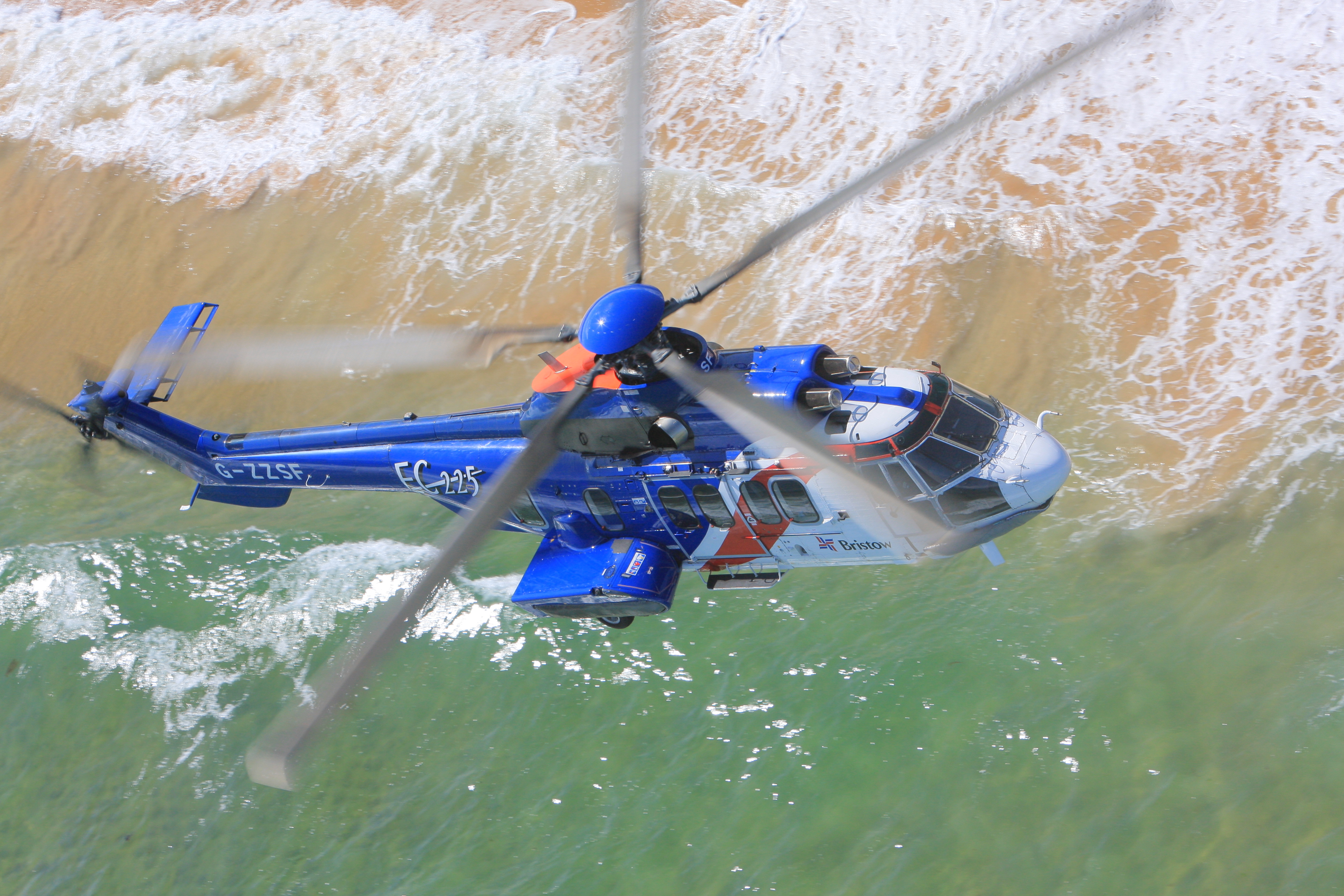Two major operators in the offshore oil-and-gas transport sector have said their H225 fleets are to remain grounded in the near term, despite the recent directives issued by the U.K. and Norway civil aviation authorities (CAAs) that allow the aircraft to return to service in those countries.
Bristow, which operates 27 of the type, and Era, which owns nine, saw their H225 fleets grounded following the fatal crash of a CHC-operated H225 near Turøy, Norway, on April 29, which claimed the lives of all 11 passengers and two pilots on board after the main rotor separated from the fuselage.
The crash remains under investigation by the Accident Investigation Bureau of Norway, but the agency believes a fatigue fracture in one of the second stage planet gears in the aircraft’s main gearbox was the most likely cause.
“As of today, there is not a lot of demand for the Airbus H225 to conduct offshore transportation missions, mostly because of macro oil-and-gas marketing conditions, and the understandable concern over the aircraft in transport mode by our oil-and-gas clients, especially in the North Sea,” said Jonathan Baliff, Bristow’s CEO and president, in a conference call with investors on Aug. 4.
“Bristow is going to be very cautious, very deliberate, and very methodical as we develop and implement a return to service, or RTS, for the H225. We will complete an extensive safety case before any flight takes place, even test flights. And we are committed to collaborating with HeliOffshore, our clients, and our passengers and their unions as part of any RTS plan.”
In a conference call discussing Era’s second quarter earnings, company president and CEO Chris Bradshaw said customers needed to be confident in the aircraft before Era could restart operations with it.
“Beyond regulatory approval and the completion of the accident investigation, the other key milestones for a potential broad-based return to service of these helicopters include confidence amongst the helicopter operators, our oil-and-gas customers, and the labor unions representing their employees,” he said.
“Era will not operate the H225 helicopters in our fleet unless and until we can develop a detailed safety case that demonstrates the aircraft can be operated safely.”
That safety case is one of the steps mandated by the U.K. and Norway CAA’s to allow the aircraft to return to service. The agencies asked operators to complete modifications originally approved by the European Aviation Safety Agency in October 2016 (including a design change to address fatigue failure, improved spalling detection and increased reliability), and then present a safety case proving they had done so and that their technicians are trained and equipped for new maintenance procedures.
According to figures from Airbus Helicopters, as of early July, only 15 percent of the global fleet of 160 AS332 L2s and H225s flying offshore oil-and-gas operations had returned to service. In a statement following the lifting of the H225 flight ban from the U.K. and Norway CAAs, Airbus said while it welcomed the move, “we understand that this will not necessarily result in immediate passenger flights as there is a lot of work to be done to restore confidence in the aircraft.”
Both Bristow and Era said they had been financially harmed by the grounding. Era filed a lawsuit in November 2016 seeking damages from Airbus related to its purchase of the type, while in his recent conference call, Baliff said Bristow was “monitoring” the ongoing legal process. “When it comes to Airbus, we continue to model all litigation, and are exploring all options with that company.”










I recall LA Airways & Sikorsky found some plastic deformation on the S-61’s main transmission case’s,due to the high operating temperature. Was a line mech for a couple years.